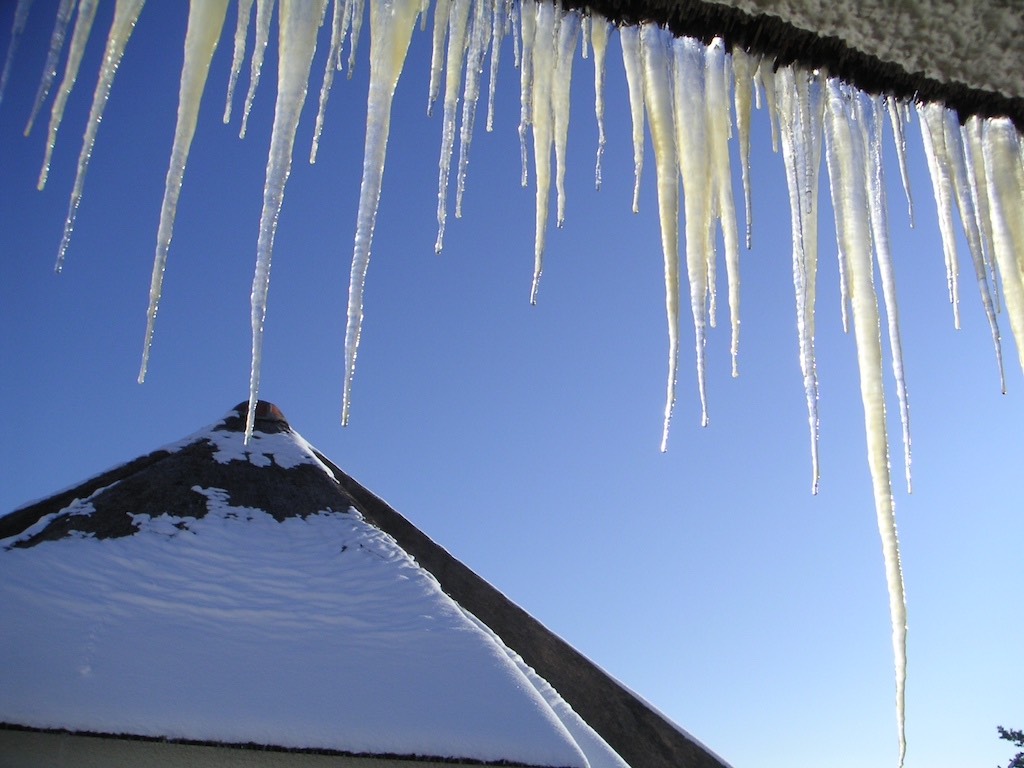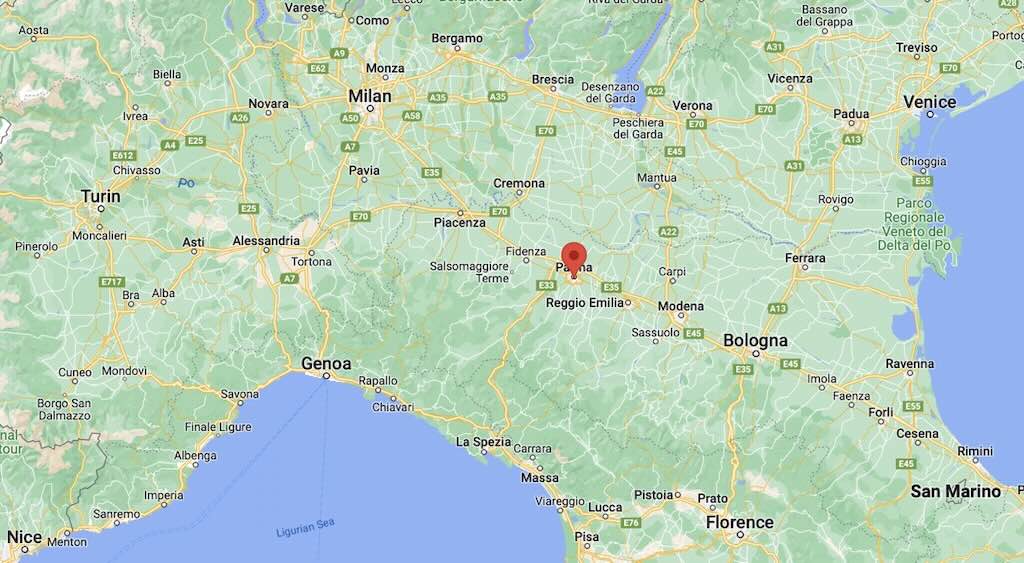The article that inspire this post was about a cluster of villages near Kyoto that are keeping the ancient tradition of thatching alive.
It brought back good memories because we lived for more than 23 years in a thatched house (abode sounds better).
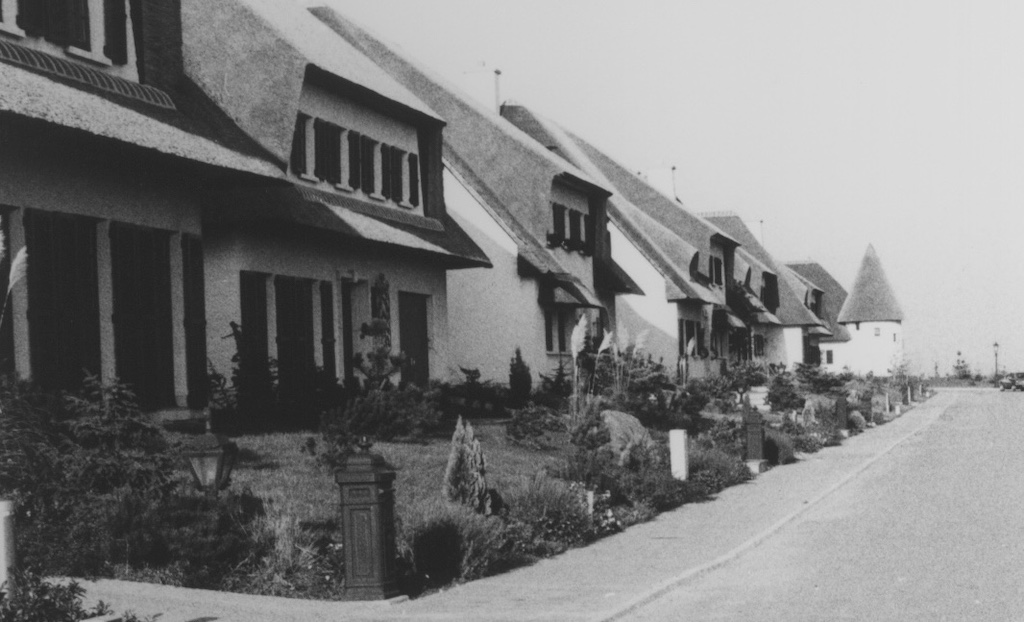
The history of our abode was simple, yet complicated. There was a local entrepreneur in the building trade, and more as a hobby than a business he built some modern-design thatched houses on land he owned in a village.
Our house was the first built, and the garages were joined with a second house next door. He then went on to build another 10 detached houses in a cul-de-sac, all with thatched roofs. Thatched houses were not unknown, but nowhere was there a ‘collection’ of them all in one place.
As I understand it, the developer wanted to also exploit a path that led from the cul-de-sac to another secondary road, but it was refused by the local council. So his attention turned to another building site about two kilometres away, where he built even larger houses, but this time no thatch, but lots of circular turrets and larger arched windows.
The thatch houses were originally rented out, but as each tenant left, the developer decided to sell. We were in the market for a new home, but hadn’t yet found what we were looking for. The estate agent almost apologetically mentioned that they had just received on their books the first of a new group of ‘thatched’ houses. But they had never sold a thatch before, and didn’t know what the implications were.
The house itself was more than perfect. Convenient located, interesting architecture, nice floor plan with lots of space (3-bed, 1-bath, big hall with monumental wooden staircase, big living, separate kitchen, double garage, etc.). And the price was very competitive.
The only problem was the thatch. The developer mentioned that the reed had been treated with a spray-on fire retardant, but we immediately contacted a local insurance company to assess the risks. Their assessment was that the thatch was a minimal fire risk, with just few % on the premium. They were also happy that the monumental wooden staircase was actually sitting on a cement base, if not this would have involved a 15% surcharge.
In fact Wikipedia mentions that thatch is not as flammable as many people believe. It burns slowly, “like a closed book” thatchers say.
Over the following 23 years we would learn to love our quirky thatch.
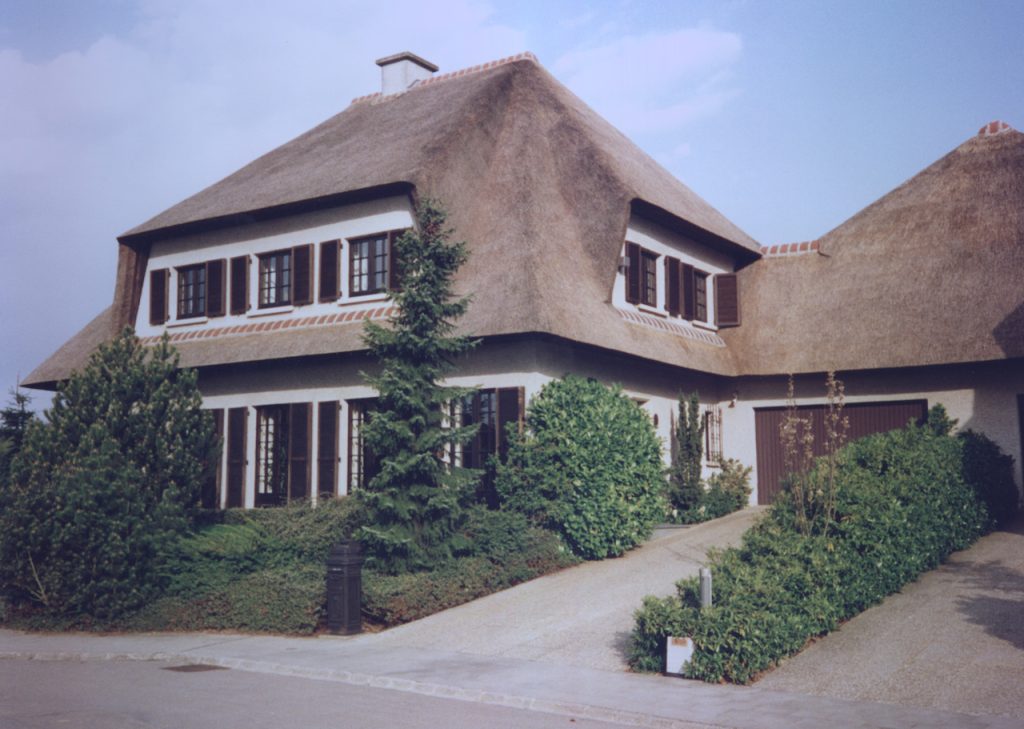
What's so special about Japanese thatch?
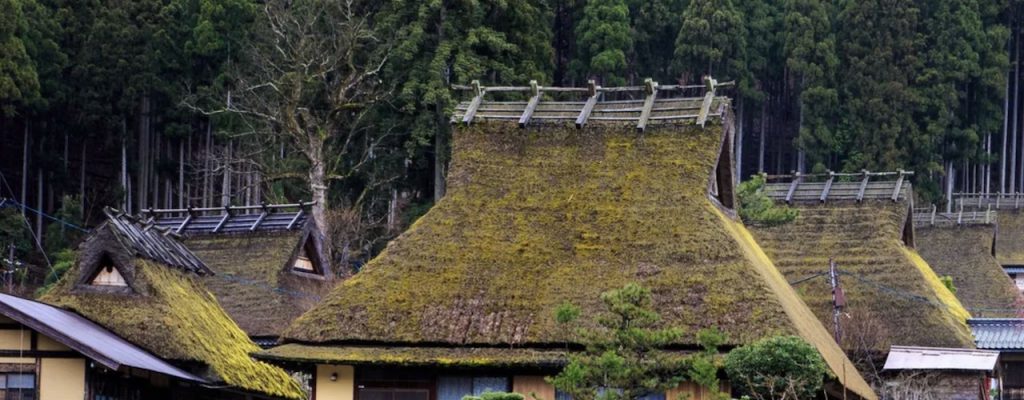
Setting aside that “Thatched roofs… create a space of nothingness, including invisible energies”, the article mentions that they are wooden houses with thatched roofs shaped in the “hip-and-gable” style, where the roof’s ridge is adorned with a tree trunk intersected by X-shaped ornaments whose number (always odd) once signalled a family’s social standing.
The article also mentioned that the village thatches are now protected and subsidised as part of Japanese heritage, and at the same time the villages have now become tourist destinations.
And what about our thatched abode?
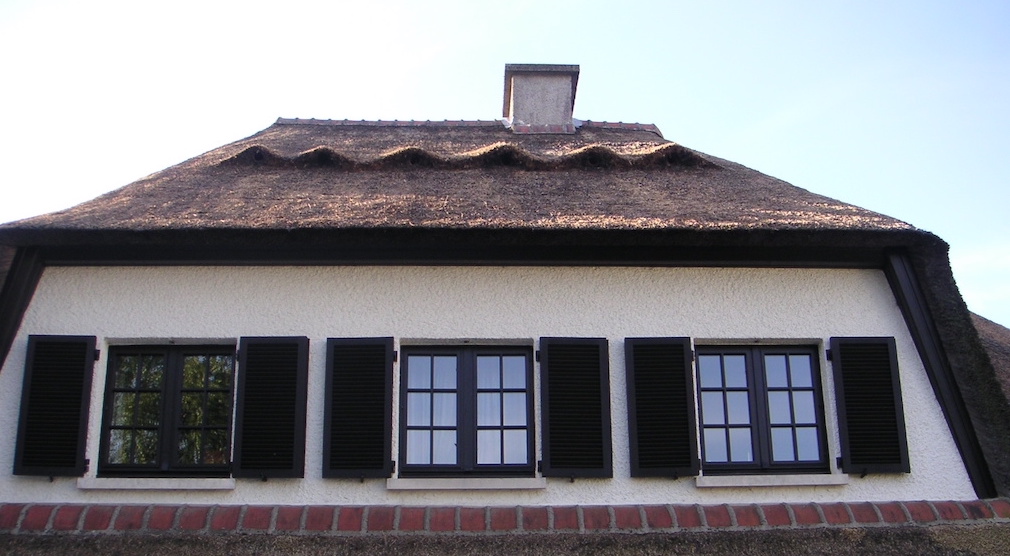
Obviously we read a lot about thatched roofs, and the key points we retained were:-
- A steep thatch is densely packed and sheds rain water away from the inner roof, so the bulk of the reeds stays dry. In fact the pitch of the roof was about 50° and you could see at the eves that rain water ran off in the top third of the thatch, and the remaining two-thirds remained dry.
- Thatch traps air which functions as insulation, keeping the house warm in winter and cool in summer. This is true, but people forget that thatch lets wind penetrate into the interior, so much depends on the exact design and orientation of the house.
- Because thatch is lighter, less timber is required in the roof structure that supports it. This is very noticeable. The attic was impressive by the hight and lack of cross trusses, leaving a massive and highly usable space. The only thing that stopped the 140 square meter space being perfectly free was the central chimney breast.
- Experts no longer recommend covering thatch with wire netting, as this slows evaporation and reduces longevity. Our thatch was not covered with a netting.
- Wikipedia mentions that water reed thatch is purely for decorative purposes and actually lies over a fully waterproofed roof built with modern materials. This was not the case with out thatched roof.
- Wikipedia also mentions that the thickness of a layer of thatch decreases over time as the surface gradually turns to compost and is blown off the roof by wind and rain. Thatched roofs generally need replacement when the horizontal wooden ‘sways’ and hair-pin ‘spars’, also known as ‘gads’ (twisted hazel staples), that fix each course become visible near the surface. It is not the total depth of the thatch that determines its longevity, but the quality of the surface layer. It’s for this reason that regular maintenance and “combing” are important because it ensures that the fixings of each overlapping course are protected.
- Wikipedia also mentioned that thatch cannot cope with regular snowfall, but I guess this depends on the strength of the underlying roof structure and the pitch of the surface. We will see below that we never had any problems with snow.
Before we moved in
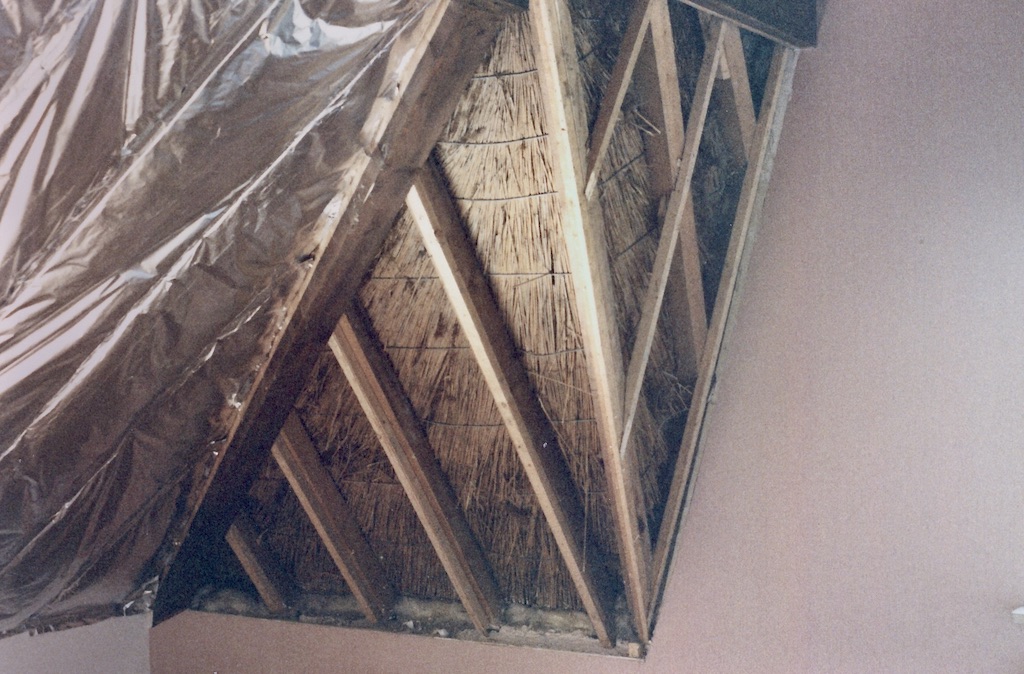
Having purchased the house, we made some modifications before moving in. We installed a new kitchen, including new floor tiles, etc. We changed the chimney in the living room for a more open-plan modern look, including a heat recycling option.
In a 60 square meter space above the garage, originally a games room, we installed our master bedroom, with a new en-suite and dressing area. Given the very large volume created by the double height of the roof slope, we also installed two additional radiators (an easy task given that the heating system was in the garage area just underneath our new bedroom).
After moving in and spending two winters in the house, we realised that wind penetration through the north-facing thatch was a major problem. Above we can see that in our new master bedroom I stripped back the dark wood panelling, and installed thermal insulation (leaving a gap between the insulation and thatch). I then replaced the wood panelling with light pine-wood panelling, which made the room much brighter and welcoming. We also installed two large Velux skylights, and fully carpeted the space to isolate it from the garage below. This insulation made an incredible difference.
Above we can see the acute slope of the roof, and the very lightweight framework of the roof support.
Our thatcher came to say hello
After a few years I remember returning from summer holidays and noticing some minor repairs had been made to our thatch roof. Fresh repairs were very distinctive because the reed was a much lighter colour. I was told that thatchers had passed by during our time away. Later a Dutch thatcher was visiting another house in the cul-de-sac, and I managed to grab him for a chat. He was the thatcher who had constructed all the roofs in our mini-village.
He was very proud of his work, and each summer he would drive past and make any minor repairs. As they say a “stitch in time” can stop a minor problem becoming a major repair. We arranged with him to give our a roof a quick “short-back and sides” on its 15th birthday.
We also learnt that our water reed was of the highest quality and he expected to the roof to survive, if properly maintained, at last 70 years (our house had been the first built and was the show house). He was less sure of the other houses in the cul-de-sac because the reed used was not as thick and strong.
We would later learn that a deep freeze killed a substantial area of Dutch water reeds, resulting in a major increase in the cost of a thatch roof. They had to start to import a cheaper reed from Eastern Europe. There are a multitude of different types of reed, but most were not as thick and strong as the reed used on our roof.
You often read that a thatched roof needs to be replaced every 20 or so years. This very much depends upon the reed used and regular maintenance. We later sold our house, but even today (2023) the thatch has been reasonably well maintained, and is in a very good condition despite being well over 40 years old.
It must be said that our little cul-de-sac went on to welcome a number of new builds, but never another thatch. And two of the existing thatches were replaced by conventional roofs, plus a third was replaced after a fire.
Repairing and maintaining a thatch
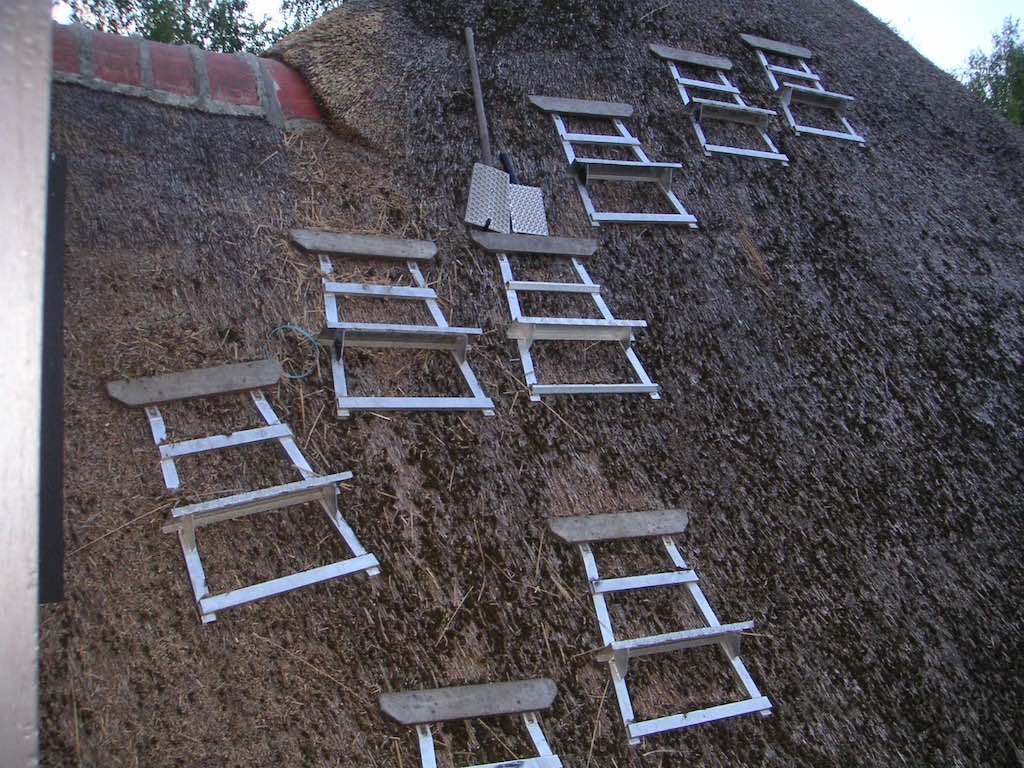
Above we have our roof with a series of modern-day hangers (hanging ladders) and a couple of modern tools, usually called leggett’s in English. Hangers, as is the case here, can be fixed with a section to stand on, and a piece of wood to kneel against. What we don’t see are the 30-40 cm long spikes that keep the hangers in place. A leggett is used to beat or drive the reed into place. The earliest form of these tools date back to the 12th century.
We can just see a small area that had been repaired a couple of years earlier. What the thatcher would do was to scrape or cut away the top layer of old or weathered reed, which would in fact be just a 10 centimetre portion of a read that was originally anything up to 1 meter long. This would produce a mass of rubbish that could be recycled as agricultural waste. We can see some new, slightly shorter, reed ready to be used to fill the gaps, etc.
The end product was a fantastic looking, well groomed roof with a wonderful honey colour.
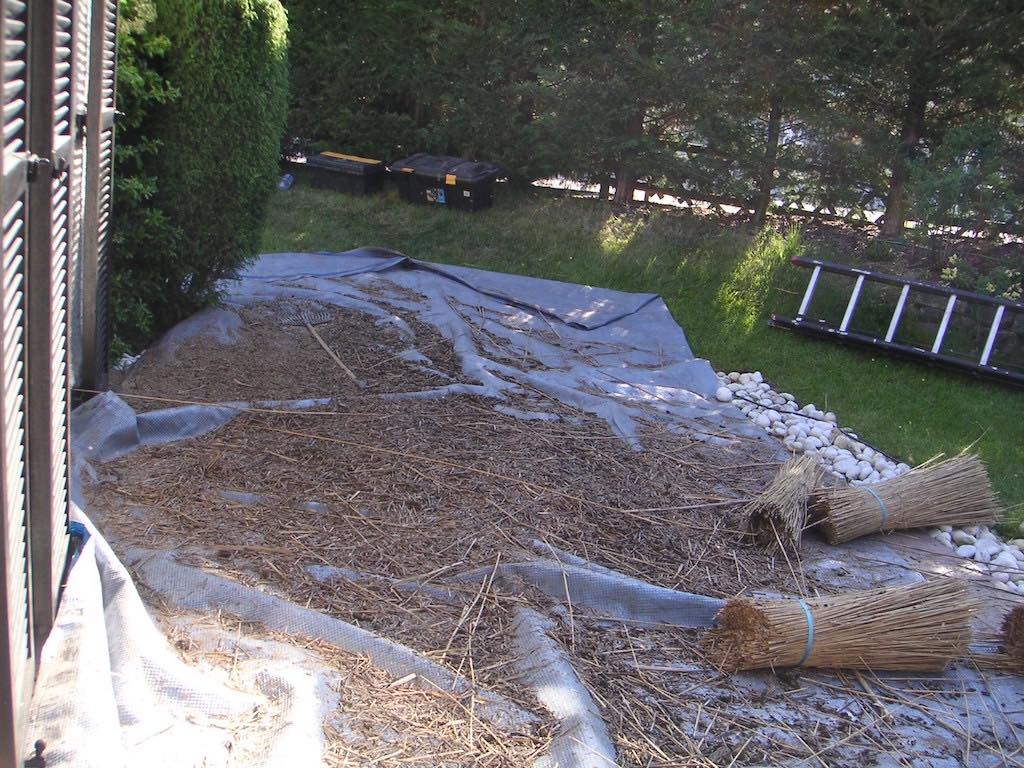
We hated Pine Martens
The first sign that there were Pine Martens in the region was when my wife’s car wouldn’t start one morning. We discovered that they like warm car engines, and enjoyed chewing through electric cables.
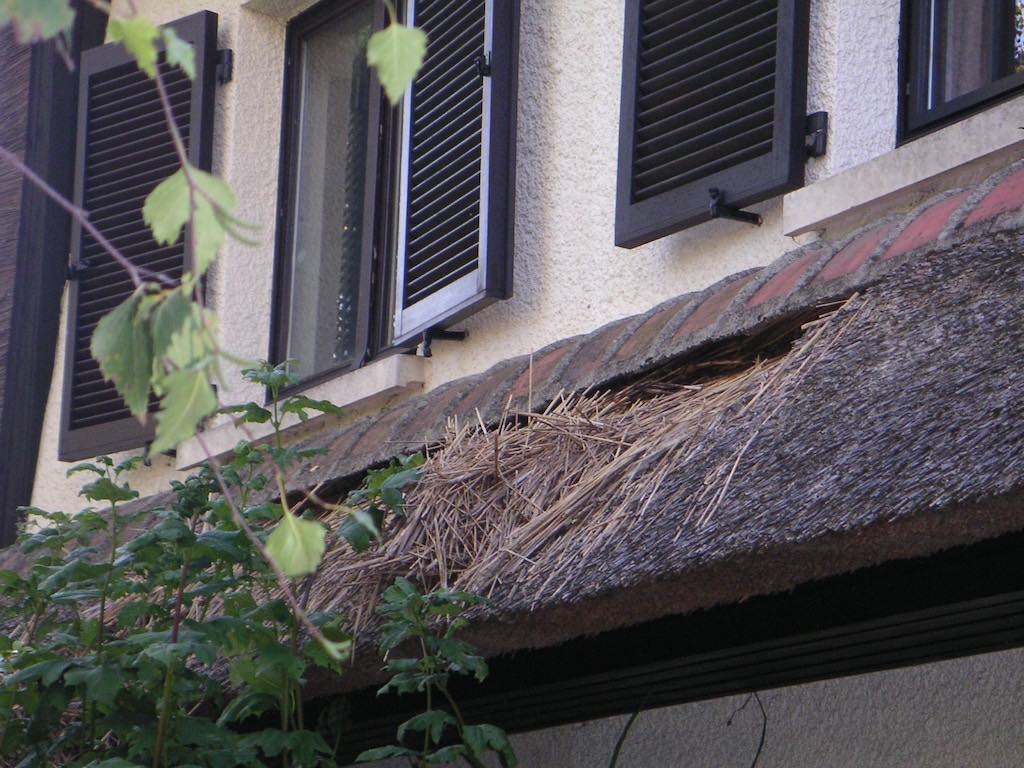
Then we found that they would dig holes in the false eves at the back of the house. While the hole they made might be small, the amount of reeds dumped on the ground was substantial.
The Pine Marten was not considered a pest, so no one would (could) help us, except by providing advice. A neighbour tried a trap with eggs as bait, but they only managed to catch cats and squirrels.
The most compelling advice was that Pine Martens can jump up to about 2 metres, so removing some trees at the back of the house will stop them. We cut away some trees around the back, which was also the advice of the local police.
They also had advised us to remove excessive cover near windows at the back of the house since we had been burgled twice despite having an alarm system. The first time the alarm disturbed them, and the second time they went for what they thought would be the main bedroom, but only ended up taking my wife’s fir coat stored in our guest bedroom.
In any case the advice worked. No more break-in’s, and it probably drove the Pine Martens to also try somewhere else.
And the risk of fire?
All the advice on the risk of fire focussed on the chimney. Keeping them clean, and avoiding to burn anything that would produce burning embers in the wind, etc.
To my knowledge there were two incidents of fire in our cul-de-sac, both cause by lightning.
The first was in a turret on one of the houses. The turret housed a circular staircase that rose from the basement to the first floor, and was topped by a conical thatch. It had been hit by lightning, and when I arrived the local fire brigade were at work. It was still raining, and the firemen were successfully stopping the fire from spreading to the main house.
However, they were having a problem with the conical thatch on the turret. The jet of water is in fact mixed with air. So the jet was doing a good job on the flames at the front of the thatched cone. However the air was penetrating through the thatch, and was feeding the flames at the back of the cone. By reducing the pressure of the water jet they were finally able to quench the fire in the turret, but the damage was done. The owner rebuilt the turret with a new thatched cone roof. More recently (2023) the house was demolished and replaced by an ultra-modern “flat-roof and panoramic windows” design.
The second fire occurred some years after we had sold our house, and it was in the house that adjoined ours. The owners were away, and the roof was hit by lightning. Unfortunately the house burnt down, but our old house survived unscathed thanks to the work of the local fire brigade. The owners rebuilt a modern house, without thatch.
Snow and ice on a thatched roof
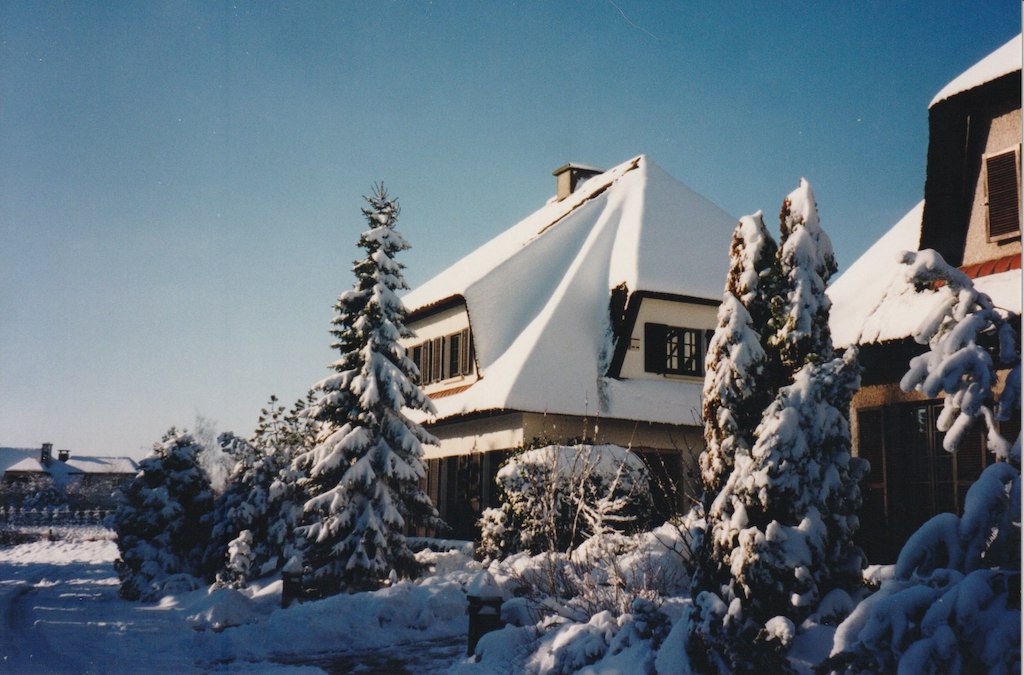
This is to debunk the idea that a thatch is not stronge enough to support snow. Almost every year we would see abundant snow at least once or twice a year (far less frequently since 2000). And never a creak or groan…
But beware, our thatch had no gutters, so leaving the house in the morning could be more dangerous that you thought… These ice stalactites hung over the front door.
